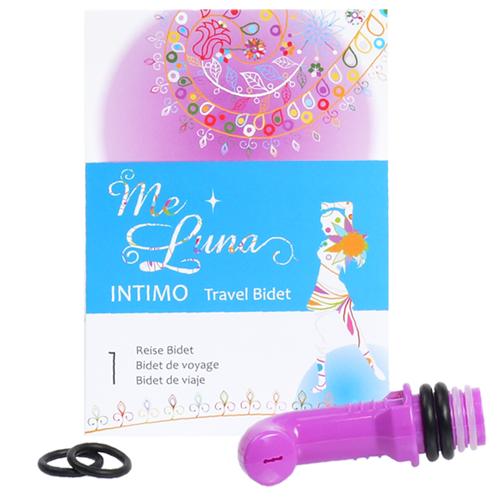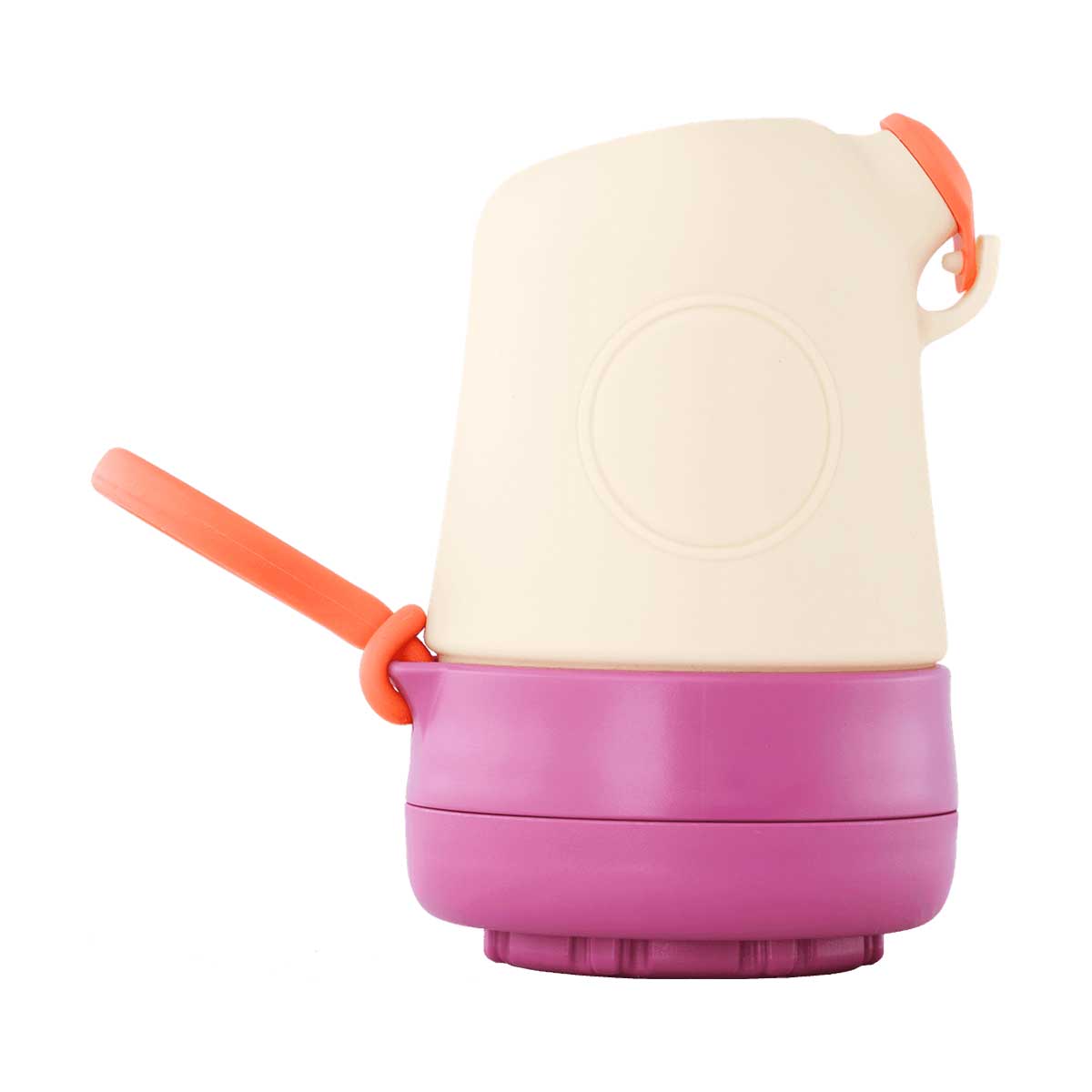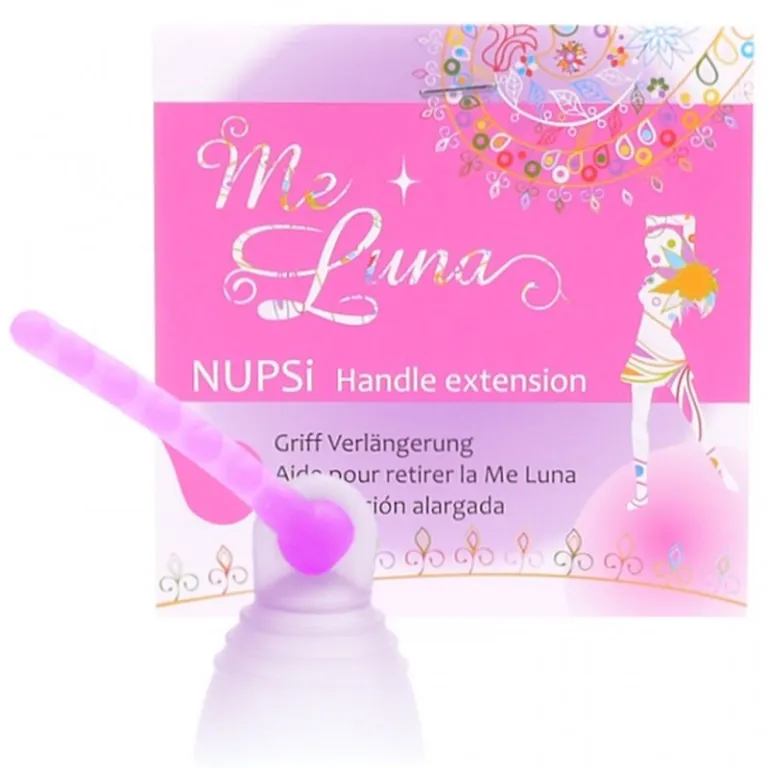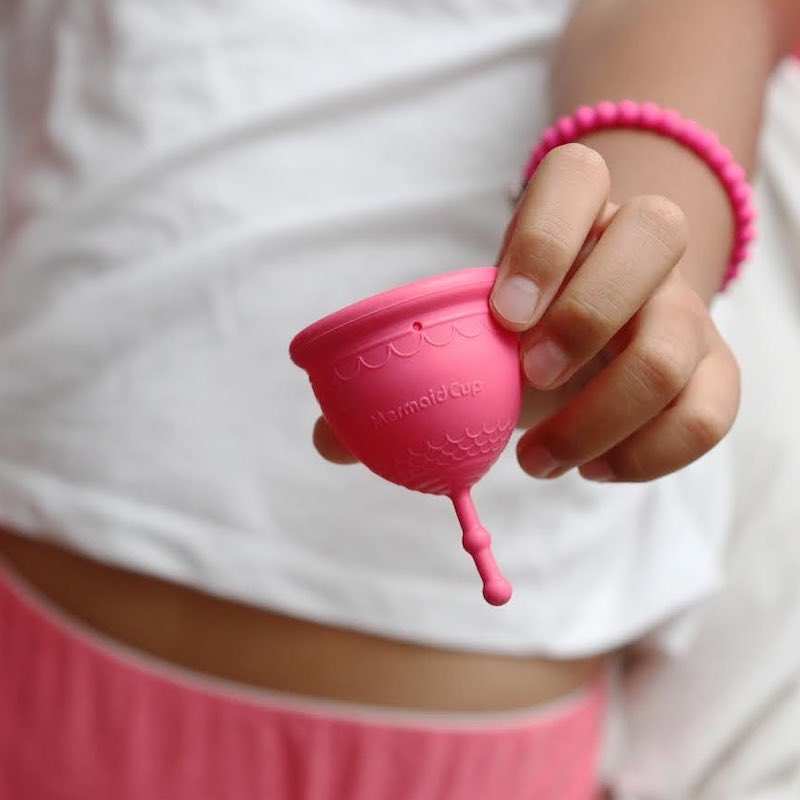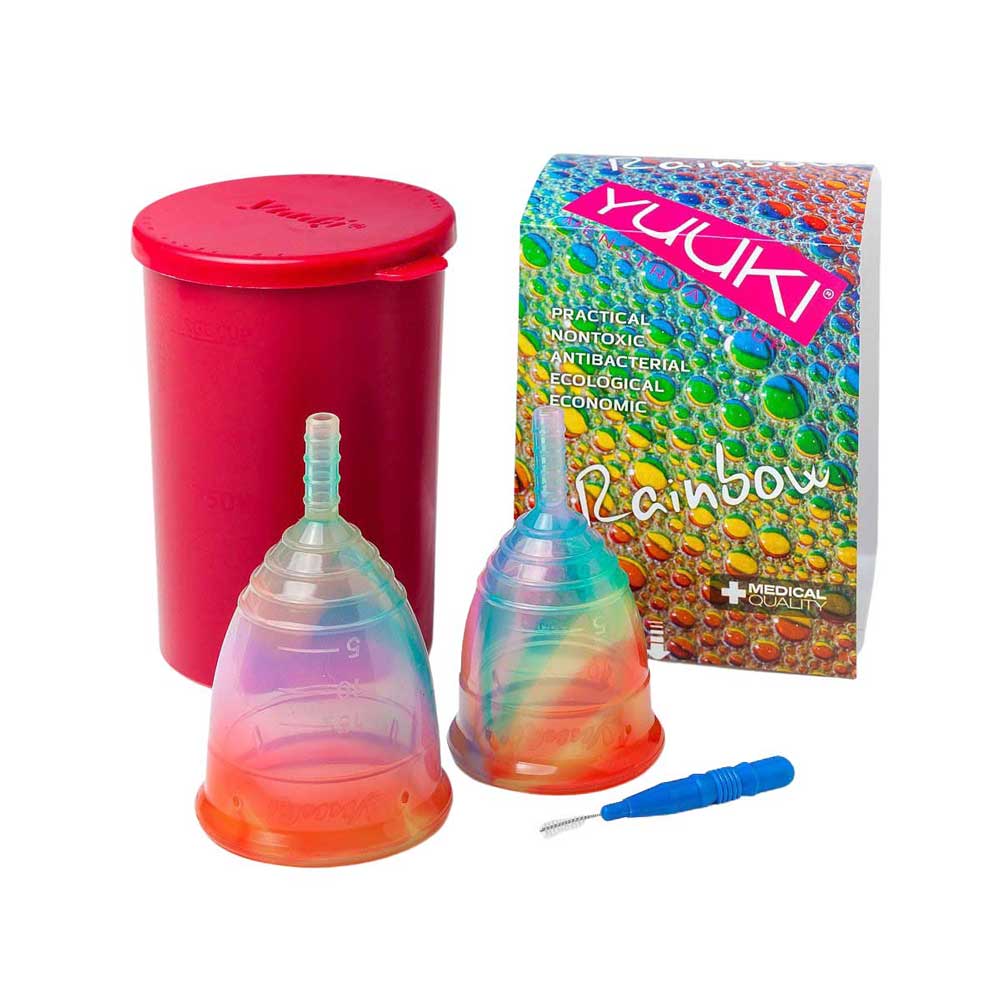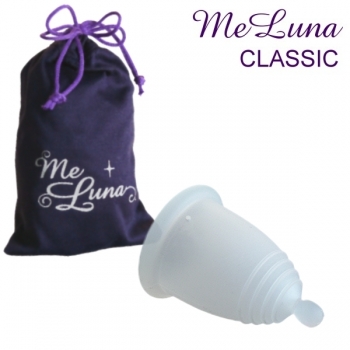What can I do? Over time it may happen that your cup gets discolored like on the photo, I know some who has never had that problem and others who will have a stained cup after less than 2 years of use.
The solution is very simple: Hydrogen Peroxide
Pour some hydrogen peroxide 3% into a clear glass (so you can watch the magic happen), drop in the cup. We recommend a ratio of 1 part bleach to 3 parts water.
It’s something you can do to give a new life to your cup. I would advise you to not leave it too long, as soon as you seen the color come back to normal, rinse your cup. It should take no more than 15 minutes. To leave it for days is not going to help and may start to degrade the silicone. You can the wash your cup as usual.
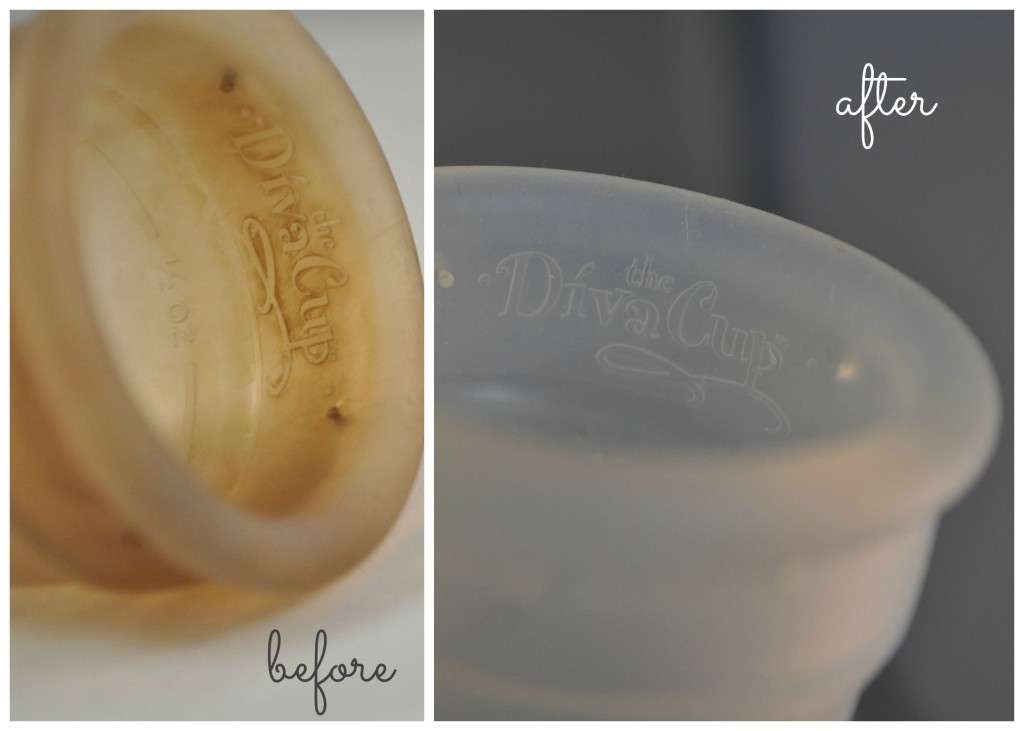
To unclog and remove stains from the suction holes of your menstrual cup, follow these steps to flush out any debris from the holes.:
- Fill the cup with water and add a small amount of cleanser.
- Cover the cup’s opening with your hand, invert it, and give it a gentle squeeze.
For stubborn clogs, you can try rubbing the area gently using a mixture of baking soda and water. This will give the extra cleaning power to ensure the suction holes are thoroughly cleaned.
To prevent stains from setting in your menstrual cup, it’s advisable to empty and rinse it more frequently. If you notice stains bothering you, try emptying and rinsing the cup with cold water every three hours instead of once a day. This regular maintenance helps to prevent the stains from becoming deeply ingrained. By being proactive and following this practice, you can maintain the cleanliness and appearance of your menstrual cup.
When is it time to replace my menstrual cup?
Medical Grade silicone can last well over ten years when cared for properly. It does, however, stain over time. Some users may wish to switch to another cup as a result, for aesthetics. In the unlikely event that a cup splits or develops cracks, it is time to replace it.
Luckily, there are a few signs to look out for that mean it’s time to replace your menstrual cup. Inspect your cup regularly for signs of deterioration:
- A sticky or powdery film (you may have seen this happen on kitchen utensils)
- Severe discoloration or odor
- or if you find its causing irritation.
Keep in mind, menstrual cups can discolor or develop an odor for various reasons over time. If you’ve noticed yours has, you can try the hydrogen peroxide trick i mentioned above. However, if an odor remains or the silicone stays tacky, you might want to purchase a new menstrual cup.

